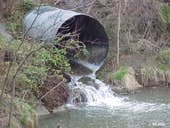A major refinery in California found itself in violation of local discharge standards and needed to upgrade its water treatment operation. The refinery had been collecting parking lot and plant runoff, which was contaminated with oil, grease and sediments. They were then mixed with process water, treated and discharged to an open waterway. The water treatment system in place was outdated and resulted in violations of the local discharge standards. The outdated system pumped water through a DAF unit where polymers were added to break oil emulsions and float as much oil as possible to the surface. This oil on the surface was then removed by skimming before entering a settling tank. The water was then discharged into the open waterway.
The Regional Water Quality Control Board's standard for oil and grease was 5 ppm. The refinery met the standard occasionally, but spikes overtaxed the system. The refinery found itself frequently being fined for discharge violations. To bring the refinery into compliance, a Biomin system was designed that consisted of two particulate filters with two 25 micron cartridges, supporting valves, pipes and hoses, followed by a number of string wound polypropylene cartridges to remove sediments of five and even one micron size. This was followed by two carbon steel pressure media filter vessels containing 720 ft. cubed of Oilsorb organoclay or 35,000 lb. Oilsorb each, and running at a flow rate of 1000 gpm each. The refinery now achieved the 5 ppm discharge limit without fail.
Oilsorb organoclay consists of bentonite modified with quaternary amines. This modification allows the organoclay to remove oils and other organic hydrocarbons of low solubility by partition, meaning that the clay can remove oils at any pH, in fresh or salt water. The organoclay is blended with anthracite to prevent early plugging of interstitial pores.
The effluent water was so clean that the refinery considered recycling it in the processing facility to reduce the costs of water and causing fewer visits by the water quality inspector. The spent material was disposed of by sending it to a fuel blender; the btu value of spent Oilsorb is 15,000 btu (land filling is also an economical option).
The Oilsorb was used for six months, after which the project was finished, the purpose achieved. The Oilsorb organoclay was not yet exhausted. It removed oil and grease at seven times the rate of activated carbon, and saved this facility 50% of its operations costs by using Oilsorb instead of activated carbon. If N/D has to be guaranteed, a carbon tank would have been added at the tail end.
Source: Biomin, Inc.


